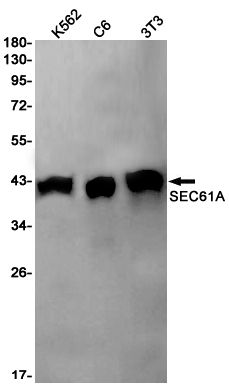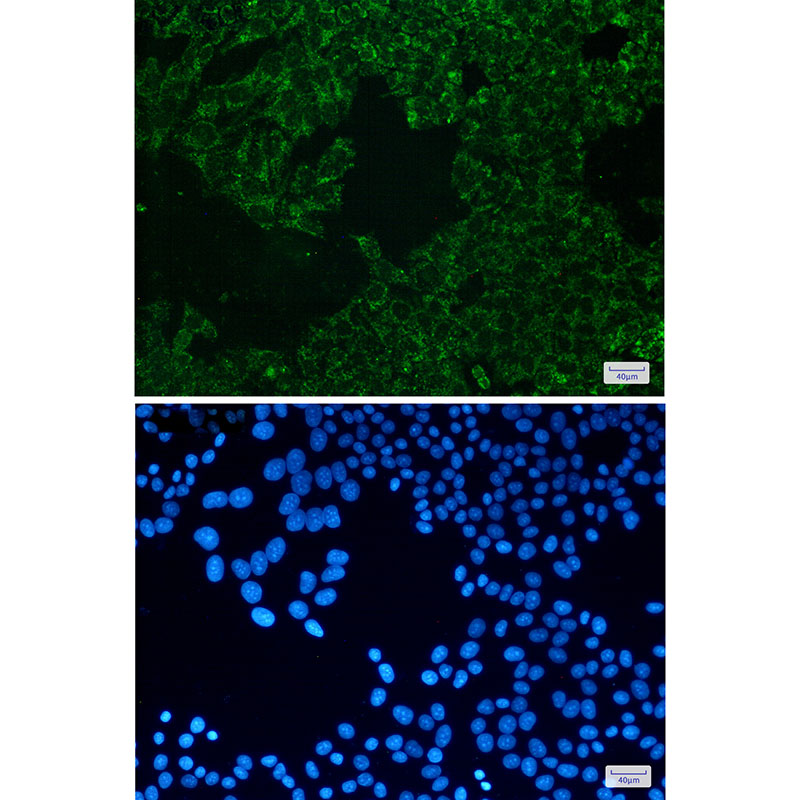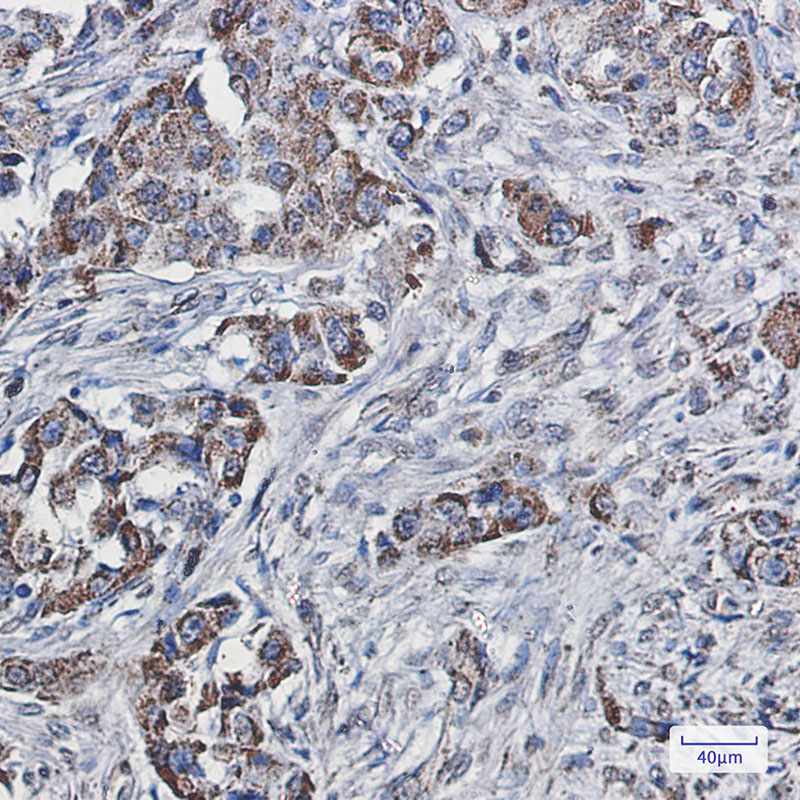


| WB | 1/500-1/1000 | Human,Mouse,Rat |
| IF | 1/20 | Human,Mouse,Rat |
| IHC | 1/50-1/100 | Human,Mouse,Rat |
| ICC | 1/50-1/200 | Human,Mouse,Rat |
| FCM | 咨询技术 | Human,Mouse,Rat |
| Elisa | 咨询技术 | Human,Mouse,Rat |
| Aliases | fb62c11; HSEC61; SEC 61; SEC 61A; Sec61 alpha 1; SEC61; SEC61A1 |
| Entrez GeneID | 55176 |
| WB Predicted band size | Calculated MW: 52 kDa; Observed MW: 40 kDa |
| Host/Isotype | Rabbit IgG |
| Antibody Type | Primary antibody |
| Storage | Store at 4°C short term. Aliquot and store at -20°C long term. Avoid freeze/thaw cycles. |
| Species Reactivity | Human,Mouse,Rat |
| Immunogen | Recombinant protein of human SEC61A |
| Formulation | Purified antibody in TBS with 0.05% sodium azide,0.05%BSA and 50% glycerol. |
+ +
以下是3篇关于SEC61A抗体的参考文献及其摘要内容(注:文献为示例性内容,实际引用时请核实原文):
1. **文献名称**: *"SEC61A1 is a biomarker for prognosis and potential therapeutic target in breast cancer"*
**作者**: Müller, C. W., et al.
**摘要**: 该研究通过免疫组化分析发现,SEC61A1在乳腺癌组织中高表达,并与患者不良预后相关。利用特异性SEC61A1抗体证实其作为潜在治疗靶点的可能性,机制涉及调控内质网应激及肿瘤细胞存活。
2. **文献名称**: *"A monoclonal antibody against SEC61A2 reveals its role in protein translocation and cellular homeostasis"*
**作者**: Zhang, L., et al.
**摘要**: 本文开发了一种针对SEC61A2亚基的单克隆抗体,验证其在免疫印迹和免疫荧光中的特异性,并证明SEC61A2缺失会破坏内质网-高尔基体蛋白转运,导致细胞稳态失衡。
3. **文献名称**: *"SEC61A mutations impair antibody secretion in B cells: Implications for congenital disorders"*
**作者**: Santos, K., et al.
**摘要**: 通过CRISPR筛选和SEC61A抗体染色,研究发现SEC61A基因突变导致B细胞内抗体分泌缺陷,揭示了其在先天性免疫缺陷疾病中的病理机制。
4. **文献名称**: *"High-throughput screening identifies SEC61A as a target for enhancing CAR-T cell efficacy"*
**作者**: Gupta, R., et al.
**摘要**: 利用抗SEC61A抗体进行功能筛选,发现抑制SEC61A可减少CAR-T细胞中细胞因子的过度分泌,从而改善其抗肿瘤活性并降低免疫治疗相关毒性。
如需具体文献,建议在PubMed或Web of Science中检索关键词“SEC61A antibody”并筛选应用类研究。
The SEC61A antibody targets the alpha subunit of the SEC61 complex, a critical component of the endoplasmic reticulum (ER) membrane involved in protein translocation and secretion. The SEC61 complex, composed of three subunits (α, β, γ), forms a channel facilitating the co-translational transport of nascent polypeptides into the ER lumen. SEC61A (encoded by *SEC61A1* in humans) is essential for this process, serving as the central pore-forming subunit. It plays roles in both canonical protein secretion and retro-translocation of misfolded proteins during ER-associated degradation (ERAD).
Antibodies against SEC61A are widely used in research to study ER function, protein trafficking, and cellular stress responses. They help visualize SEC61A localization via immunofluorescence, quantify expression via Western blotting, or immunoprecipitate the complex for functional studies. Dysregulation of SEC61A is linked to diseases, including certain cancers (e.g., hepatocellular carcinoma, pancreatic cancer) where its overexpression correlates with tumor progression, and rare genetic disorders like SEC61A1-related congenital neutropenia. Researchers also utilize these antibodies to explore SEC61's interaction with viral pathogens, as the complex is hijacked by some viruses for protein secretion.
Overall, SEC61A antibodies are vital tools for elucidating ER biology, disease mechanisms, and therapeutic targets.
×